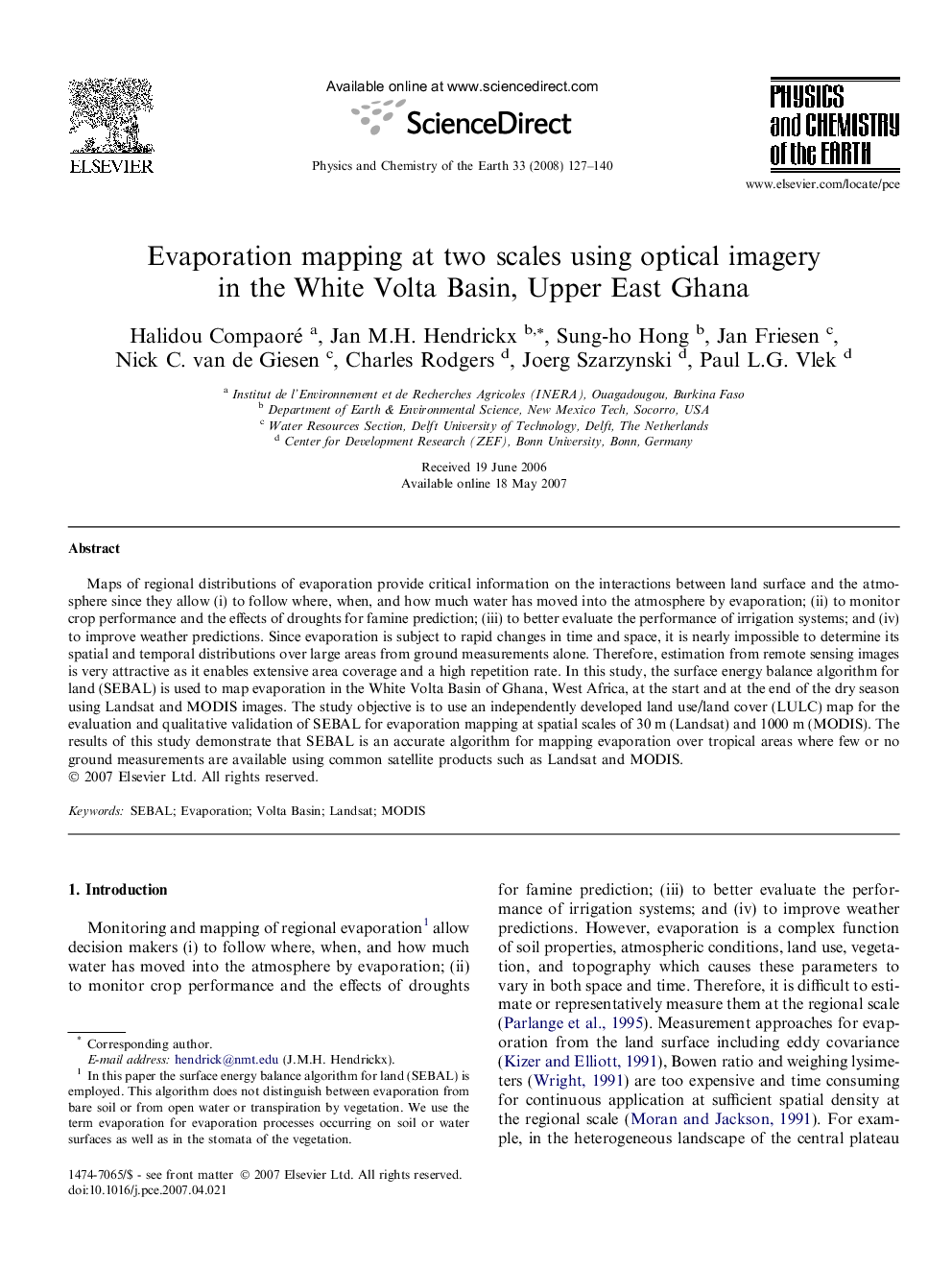| Article ID | Journal | Published Year | Pages | File Type |
|---|---|---|---|---|
| 4721682 | Physics and Chemistry of the Earth, Parts A/B/C | 2008 | 14 Pages |
Maps of regional distributions of evaporation provide critical information on the interactions between land surface and the atmosphere since they allow (i) to follow where, when, and how much water has moved into the atmosphere by evaporation; (ii) to monitor crop performance and the effects of droughts for famine prediction; (iii) to better evaluate the performance of irrigation systems; and (iv) to improve weather predictions. Since evaporation is subject to rapid changes in time and space, it is nearly impossible to determine its spatial and temporal distributions over large areas from ground measurements alone. Therefore, estimation from remote sensing images is very attractive as it enables extensive area coverage and a high repetition rate. In this study, the surface energy balance algorithm for land (SEBAL) is used to map evaporation in the White Volta Basin of Ghana, West Africa, at the start and at the end of the dry season using Landsat and MODIS images. The study objective is to use an independently developed land use/land cover (LULC) map for the evaluation and qualitative validation of SEBAL for evaporation mapping at spatial scales of 30 m (Landsat) and 1000 m (MODIS). The results of this study demonstrate that SEBAL is an accurate algorithm for mapping evaporation over tropical areas where few or no ground measurements are available using common satellite products such as Landsat and MODIS.
